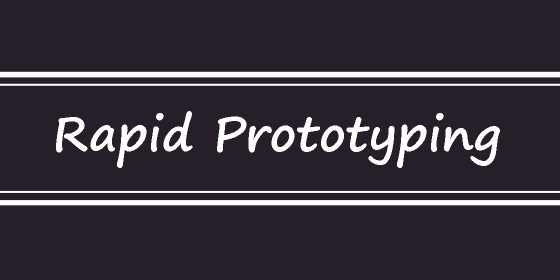Rapid Prototyping

Rapid prototyping is a technique used in product development and design that involves quickly creating tangible and functional models or prototypes of a product or service. The primary goal of rapid prototyping is to test and validate design concepts, gather user feedback, and identify potential issues or improvements early in the development process. It enables designers and engineers to iteratively refine their designs and make informed decisions before moving to full-scale production.
Key features of rapid prototyping include:
- Speed: Rapid prototyping emphasizes quick turnaround times, allowing designers to create and test multiple iterations in a short period.
- Low-Cost: Rapid prototyping methods are generally cost-effective compared to traditional manufacturing processes.
- Tangible Representation: The prototypes produced through rapid prototyping are physical representations of the design concept, allowing for hands-on evaluation and testing.
- Iterative Process: Rapid prototyping encourages an iterative approach to design, where each prototype is improved based on feedback and insights.
- Validation and Testing: Prototypes are used to validate design assumptions, test functionality, and gather user feedback for refinement.
Rapid prototyping techniques vary and can include methods such as 3D printing, CNC machining, laser cutting, and foam modeling. These technologies enable designers to create prototypes from various materials, including plastic, metal, wood, and more.
The benefits of rapid prototyping include:
- Faster Innovation: Rapid prototyping accelerates the innovation process by quickly turning ideas into physical prototypes.
- Early Problem Identification: Prototypes help identify design flaws and issues early, reducing the risk of costly errors during production.
- User-Centered Design: Testing prototypes with end-users allows designers to incorporate user feedback and preferences into the final design.
- Cost Savings: Detecting and addressing design issues early in the process can save costs associated with late-stage changes or product recalls.
- Effective Communication: Prototypes facilitate better communication among cross-functional teams, stakeholders, and investors by providing a tangible representation of the design.
Rapid prototyping is widely used across industries, including product design, automotive, aerospace, consumer electronics, and medical device development. By leveraging this technique, designers and engineers can refine their ideas, create successful products, and bring innovations to the market more efficiently and effectively.